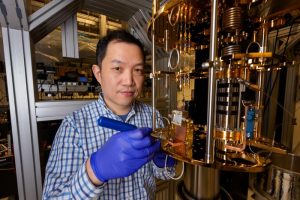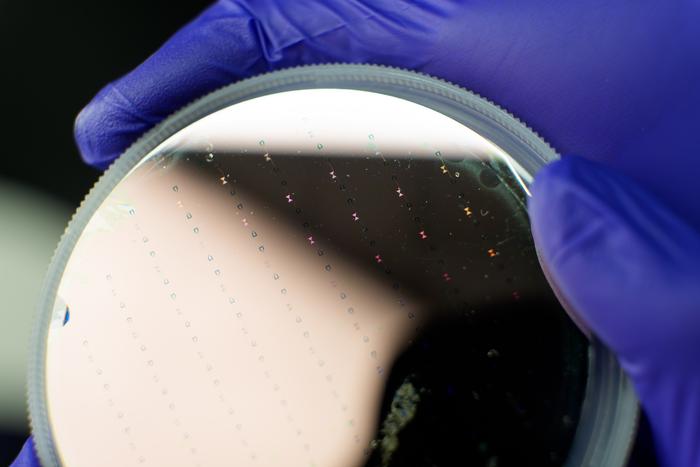Currently, the maximum distance that two quantum computers can be connected via fiber cable is several kilometers.
This means that the quantum computers at the University of Chicago’s South Side campus and the Willis Tower in downtown Chicago would be too far away to communicate with each other, even if there were fiber cables running between them.
But new advances from the University of Chicago’s Pritzker School of Molecular Engineering could theoretically extend that maximum distance to 2,000 km (1,243 miles).
This new approach allows the same UChicago quantum computer that previously couldn’t reach Willis Tower to connect and communicate with a quantum computer outside Salt Lake City, Utah.
“For the first time, the technology to build a global quantum internet is within reach,” said Tian Zhong, assistant professor who led the research.
maintain quantum coherence of atoms
Linking quantum computers to create powerful, high-speed quantum networks requires intertwining atoms through fiber cables.
The longer entangled atoms maintain quantum coherence, the longer quantum computers can link together.
As part of the new advance, Zhong and his team at the University of Chicago PME have boosted the quantum coherence time of individual erbium atoms from 0.1 milliseconds to more than 10 milliseconds.
In one example, we demonstrated delays of up to 24 ms. In theory, quantum computers could connect over a staggering 4,000 km, the distance from the University of Chicago’s PME to Ocaña, Colombia.
Same material, different manufacturing method
The innovation was not in using new or different materials, but in building the same materials in a different way.
Rather than using the traditional Czochralski method, they used a technique called molecular beam epitaxy (MBE) to create the rare earth-doped crystals needed for quantum entanglement.
To turn this crystal into a computer component, researchers chemically “sculpt” it into the desired shape. This is similar to how a sculptor would select a slab of marble and chip away everything but the statue.

“We start from scratch and build this device atom by atom,” Zhong explained. “The quality or purity of this material is so high that the quantum coherence properties of these atoms are excellent.”
Next step: Connecting quantum computers over long distances
Now the team needs to test whether increasing coherence time will allow quantum computers to connect with each other over long distances.
“We’re actually going to test it just in my lab before we actually deploy fiber from, say, Chicago to New York,” Zhong said.
This involves connecting two qubits in separate dilution refrigerators (“refrigerators”) in Zhong’s lab at the University of Chicago PME via 1,000 kilometers of spool cable. This is the next step, but it is far from the final step.
“We are currently building a third refrigerator in my lab. When everything comes together, a local network will be formed. First, we will conduct experiments locally in my lab to simulate what future long-range quantum networks will look like.”
“This is all part of our grand goal of building a true quantum internet, and we are on the verge of achieving new milestones towards that goal.”
Source link

